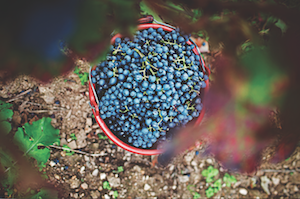The Deutsch Wine Institute’s Great Britain and Scandinavian contact Carola Keller backs up these assertions, pointing to the fact that in Norway, for example, one in three bottles of white wine drunk is German. She also describes dynamic growth across Scandinavia, and says the UK (third largest export territory after the US and then Netherlands) is delivering high value growth at all levels above £7.
China and the broader Asia Pacific region is also in growth, with Loosen suggesting that the mix of prestige drinking in China coupled with the clamp down on corporate gifting has benefitted the perceived high quality but reasonably priced (compared with top Bordeaux, for example) and food-flexible Rieslings that Germany offers.
“In Asia our off-dry styles of Riesling can also be more compatible with both the general Chinese palate and also the spicier elements in many foods, so once the door is opened these styles are gaining in popularity too,” suggests Loosen.
Keller says the ongoing work of the DWI is now to promote diversity: “Our challenge is to continue to focus on our great asset, Riesling, but while also encouraging people to try the vast diversity of German wines, the variety of styles, producers and regions.”
One of the drawbacks for Germany is that, despite being an economic powerhouse and major political player at the heart of Europe, its culinary prowess is little known beyond its borders, which in turn means there is no ‘ethnic’ German restaurant sector to showcase its wines.
“Few people beyond Germany understand or know of the excellence of its culinary scene,” says Martin Lam, ex-chef and UK-based wine and restaurant consultant. “Germany has 11 three Michelin star restaurants alone, and a far greater concentration of Michelin stars than the UK, but there are almost no German restaurants of quality, ignoring a few bratwurst vendors, seen beyond Germany, so there is little understanding of this.”
Lam is hardly a lone voice when he states that German Riesling can be a fantastic and highly flexible food wine, perfectly suited to the plethora of global influences and cuisines found in cities such as London. And the trend in modern British and much European cooking towards vinegar and salt pickled ingredients, with sweet and sour elements to dishes, also plays to the strengths of Riesling, including its off-dry styles.
“Once people have become comfortable with the idea of dry Rieslings, they can then perhaps be encouraged towards off-dry styles which can work so well with so many styles of food,” concludes Lam.
Riesling gateway
Tobias Brauweiler, head sommelier at Hakkasan in London, agrees, also arguing that Riesling remains the best gateway to Germany’s breadth of diverse varieties and styles.
“Sommeliers typically have German wines on the list and these are wines that they like to sell, but they are always a hand sell, even Riesling,” says German-born Brauweiler. “But Germany is much more than Riesling, there are so many interesting varieties, with whites such as Scheurebe, Silvaner, Pinot Blanc and very good Pinot Gris (or Grigio), along with excellent Pinot Noirs, all of which open up so many possibilities with food.




